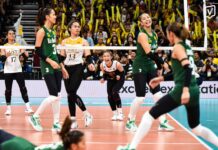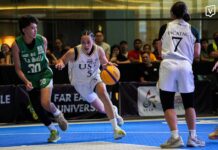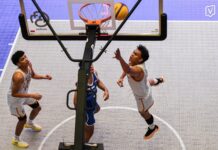IT WOULD take more than the extension of residency years to completely eradicate athlete piracy in the UAAP.
But it’s a good start, according to Fr. Ermito de Sagon, O.P., director of the UST Institute of Physical Education and Athletics, who also pointed to monetary incentives that prompt athletes to move from one school to another.
“[The proposed UAAP rule] is not sufficient,” De Sagon said. “If we see that it’s not working then we have to implore other ways of curtailing piracy.”
“With the two years [of residency], I don’t think other schools would be paying for athletes who will not be playing for the two years…it is just a starting point of the problem, but we hope the rule can be still improved later,” he added.
Francis Ochoa, assistant sports editor of the Philippine Daily Inquirer, said the new rule would help counter piracy, but “raises a few more concerns.”
“The rule works against the kids, who basically got their choices stripped from them,” Ochoa said. “The best way UAAP could have addressed piracy was to go straight to the root: recruitment practices. It confounds me that the UAAP reduces to confront this issue and settles for self-serving transferee rule.”
In the old rule, a student-athlete who transferred to another UAAP member school—either from high school or another college —would sit out for a year before participating in a UAAP tournament, unless he got a clearance or “release paper” from his former school. The one-year residency would be counted against his playing years.
Otherwise known as the “Soc Rivera rule,” the mandate was named after the promising junior’s basketball star who left Far Eastern University (FEU) for the University of the Philippines (UP), along with three other teammates, in 2007.
However, UAAP officials formed a committee to revise the residency rule following the tug-of-war between FEU and Ateneo de Manila University over top prospect Jerie Pingoy, a back-to-back juniors MVP from FEU.
With a vote of 5-2 with one abstention, the UAAP Board approved the revisions last March 5. Unlike in the previous rule, the residency years would not be included in an athlete’s playing years.
Another measure being considered to curb piracy in the country’s premiere inter-collegiate league is to pattern it after the National Collegiate Athletic Association (NCAA), which is regulated by the government.
De Sagon, however, said the idea was nearly impossible to pursue because the UAAP, compared with the nationwide scope of United States’ NCAA, has only eight participating schools.
“It is leveled [in the United States’ NCAA]—what you get in this university is what you also get in another university,” he said. “You have free tuition, but other than that, they do not allow bribery.”
“The board members are very hard about [the piracy issue] because each of them go for the interest of their own school and I have reminded them that we have to be concerned about the interest of the whole league,” De Sagon said. “Because when the time comes that only two schools will be able to have competitive teams because all the other players are being recruited by them, you will end up destroying the whole league.”
Victim
Over the past years, UST has been a famous poaching ground for athlete piracy as it saw some of its top-caliber athletes being lured by other schools.
But De Sagon said there’s no need to be retroactive about the rule, adding that it is needless to feel bad about the timing of the rule’s implementation.
“Should that rule been applied the last years, we wouldn’t have lost so many players but it’s already water under the bridge. But for the comment, I think it is a wise rule. I don’t think it will entirely solve the problem of piracy but at least deter some people from doing it.”
Grounded virtues
De Sagon said although athlete piracy through monetary incentives is a long-endured cancer of the league, UST will not keep pace with the trend and stick with their method and principles.
“We maintain our policy of keeping amateurism in the high school and college level,” he said. “They’re just amateur athletes. And as amateur athletes, I think money consideration should not be part of it. Now if other schools do that, that’s not our problem.”
De Sagon added that UST will not go overboard in promising athletes anything and instead, be honest of what it can truly offer.
“They play, their education is free, they have board and lodging. If they get sick we will take care of them and that’s it. We would not promise things to them that we cannot give. Because there are so many schools which make promises and they end up caught up in the same problem.” Jose Antonio R. Nisay
















